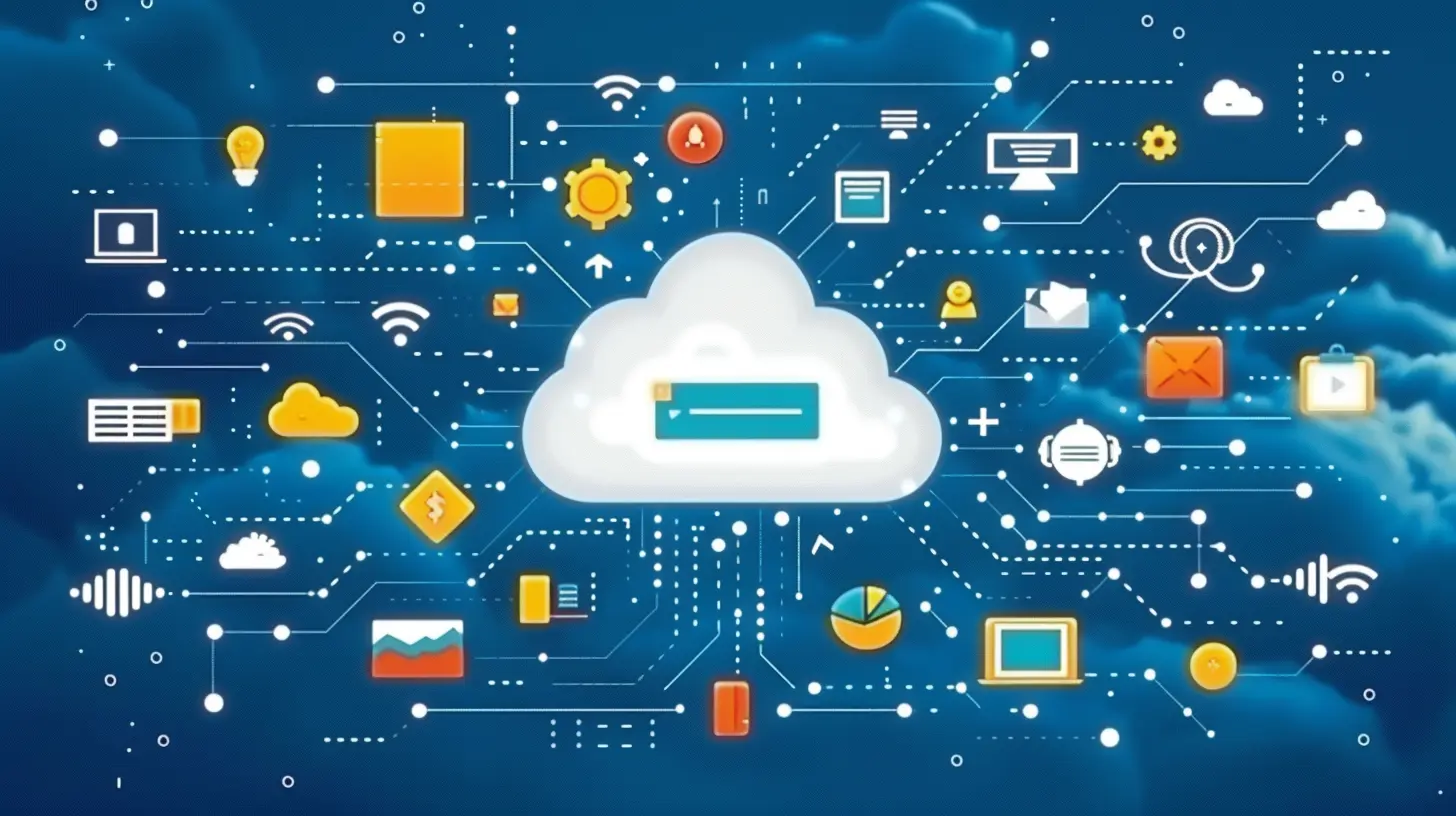How Cloud Computing is Streamlining Educational Resources
5 July 2025
Let’s be real—education has come a long way from chalkboards and clunky computers. Today’s classrooms are buzzing with digital tools, online platforms, and yes, cloud computing. But what’s all the fuss about? Why are educators, schools, and even students raving about the cloud?
If you’ve ever wondered how cloud computing is changing the game in education, then buckle up. We’re about to dive into how this tech marvel is streamlining educational resources, making learning smoother, faster, and honestly, way cooler.
What Exactly Is Cloud Computing?
Before we get into the nitty-gritty of how it’s helping in schools, let’s clear the air on what cloud computing even means.Imagine storing all your documents, photos, and apps not on your personal device, but somewhere online—like a magical hard drive in the sky. That’s cloud computing. Instead of storing info on your computer’s hard drive, you access it through the internet, anytime, anywhere.
Think of it like Netflix. You don’t physically own any movies, but you can watch them whenever you want. Cloud computing works the same way for data and applications.
Why Cloud Computing Matters in Education
Now, picture this: a teacher in a rural village and a student in a bustling city both having access to the same educational content, tools, and resources in real-time. That’s the magic cloud computing brings to the table.With educational institutions under constant pressure to innovate and do more with fewer resources, cloud tech has stepped in as the ultimate wingman.
1. Easy Access to Learning Materials Anytime, Anywhere
Gone are the days of lugging around heavy backpacks and flipping through outdated textbooks. Cloud platforms like Google Drive, Microsoft OneDrive, and Dropbox allow students to access their assignments, notes, and resources from any device.Whether it's 3 AM or a school break, students can pull up their materials with just a few clicks. Got a group project? No need to meet in person anymore—collaborate in real time through cloud-based tools.
It's like having your classroom in your pocket.
2. Cost-Efficient for Schools and Students
Let’s talk money. Traditional education requires a ton of physical infrastructure—books, servers, computer labs, paper. It adds up fast.Cloud computing slashes these costs. Schools don’t need to maintain expensive hardware or constantly buy new software updates. Most cloud services operate on a subscription basis and get updated automatically.
That means more budget for what truly matters—better teaching resources, training, and student services.
3. Real-Time Collaboration and Communication
Remember the frustration of sending back-and-forth emails for group projects or waiting for the teacher to return your paper with feedback?Cloud platforms like Google Workspace for Education and Microsoft Teams allow live edits, instant feedback, and shared communication tools in real-time. Whether you're a student sharing a PowerPoint or a teacher reviewing essays, everything happens on the fly.
It’s almost like having a virtual study group where everyone’s online and in sync—no more email chains from the Stone Age.
4. Personalized Learning Experiences
We all learn differently. Some students grasp concepts better using videos; others prefer reading or hands-on practice. Cloud-based educational tools adapt to individual learning styles.Platforms like Khan Academy or Coursera use cloud technology to offer personalized learning paths based on a learner's pace and performance.
It's like having a digital tutor who knows you inside out and adjusts the lesson plan just for you.
5. Seamless Software Updates and Integration
Imagine being a school IT person trying to update every single computer with the latest software. Sounds like a headache, right?With cloud computing, updates are rolled out automatically across all devices. Schools can integrate new tools easily without installing them one by one.
This not only saves time but also ensures that everyone—students, teachers, and admins—is always working with the latest tech.
6. Enhanced Data Security and Backup
When everything’s stored on paper or a single device, a fire, theft, or system crash can wipe out valuable data. Yikes.Cloud storage, on the other hand, offers tougher security and automatic backups. Most providers use high-level encryption and keep multiple backups at different locations.
So even if a laptop is stolen or a device crashes, all the important files are safe and sound—floating securely in the cloud.
7. Encouraging Green Education
Let’s not forget the environment. With cloud computing, schools can cut down on paper usage, reduce power consumption from servers, and minimize the need for physical storage.It's a win-win—not just for students and educators but also for Mother Earth. Green learning is here, and it's powered by the cloud.
8. Simplified Administration and Management
Behind every smooth-running school is a team of folks handling scheduling, enrollment, grade management, and a hundred other things.Cloud-based Student Information Systems (SIS) make life easier by centralizing all that data. Whether it's tracking attendance, generating report cards, or managing admissions—it’s all done from a single dashboard.
It’s like giving a Swiss Army knife to school administrators.
9. Enables Remote Learning and Online Classes
Thanks to the cloud, education didn’t come to a halt during the pandemic. With platforms like Zoom, Microsoft Teams, and Google Classroom—students attended classes, submitted homework, and took quizzes, all from home.Sure, remote learning has its challenges, but without cloud computing, it would’ve been next to impossible.
And now, even post-pandemic, blended learning (a mix of online and offline) is becoming the new norm.
10. Easy Scalability for Institutions
What if a school suddenly gets an influx of students? Or a university starts a new course? With traditional systems, scaling up would be a logistical nightmare.Cloud platforms can quickly handle sudden increases in users or data load. Schools simply upgrade their subscription or add more storage—no need to buy new servers or hire more IT folks.
It’s like ordering more data space the way you’d get more storage on your phone—quick and easy.
11. Bridging the Digital Divide
Access to quality education shouldn’t depend on where you live or how much you can afford.Cloud computing levels the playing field. As long as there’s internet access, students from remote, underfunded areas can tap into the same world-class resources as someone in a top-tier city school.
That’s the kind of equity education has needed for a long time.
12. Supporting Teachers with Better Tools
Educators aren’t left behind in this digital revolution. Cloud-based tools help teachers create, deliver, and manage lessons more effectively.Platforms like Edmodo, Google Classroom, and Canvas allow teachers to assign tasks, track performance, and interact with students—all from a single interface.
Professional development resources, peer collaboration, and online communities are also just a click away.
Basically, it’s giving teachers a superpower toolbelt.
The Future Is Looking Cloudy—and That’s a Good Thing!
As schools continue to embrace digital transformation, cloud computing is proving to be more of a necessity than a luxury. With so many benefits—cost savings, flexibility, accessibility, and better learning outcomes—it's clear that the cloud isn’t just a passing trend.It’s reshaping how we teach, how we learn, and how we manage education altogether. So whether you're a student, teacher, parent, or school admin, the cloud has something awesome in store for you.
And the best part? We’re only just scratching the surface. With advancements in AI and machine learning also riding the cloud wave, the future of education is about to get even more exciting.
Final Thoughts
So, how is cloud computing streamlining educational resources? In just about every way you can imagine—faster access, personalized learning, smoother collaboration, better management, and more.We're living in a time when technology isn’t just enhancing education—it’s transforming it. And the cloud is one of its most powerful engines.
So next time you log into your online class, save an assignment on Google Drive, or join a Zoom study group, take a moment to thank the invisible cloud making it all possible.
all images in this post were generated using AI tools
Category:
Innovation In EducationAuthor:

Olivia Lewis
Discussion
rate this article
1 comments
Rocco McQuaid
This article offers valuable insights into how cloud computing is transforming education. I appreciate the clear examples provided, which highlight the benefits for both educators and students. It's an exciting time for learning!
July 22, 2025 at 4:55 AM

Olivia Lewis
Thank you for your kind words! I'm glad you found the examples helpful and that you share my excitement about the impact of cloud computing on education.


